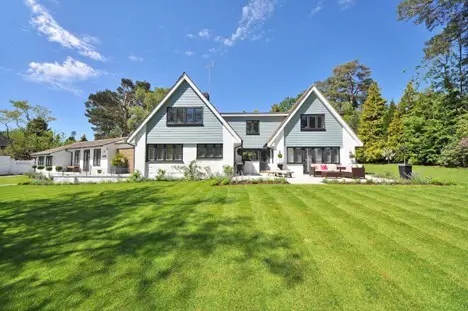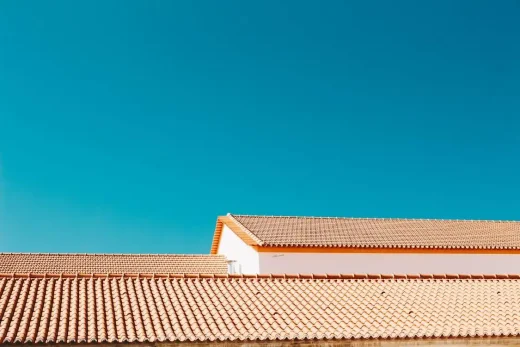Commercial roofing impacts building design and sustainability, roof repair contractor, Building home maintenance
How Commercial Roofing Impacts Building Design and Sustainability
8 December 2024
Roofing plays a critical role in the functionality, aesthetics, and environmental impact of a building. Commercial roofing, in particular, has a profound effect on a structure’s design and sustainability. With advancements in materials and techniques, modern commercial roofing systems are being designed not only to protect buildings but also to enhance energy efficiency, reduce environmental impact, and contribute to overall aesthetic goals. Here’s a detailed look at how commercial roofing impacts building design and sustainability.
Enhancing Building Aesthetics and Design Flexibility
Commercial roofing is no longer just a functional component of a building—it has become an integral part of architectural design. The right roofing system can complement a building’s overall aesthetic, helping it stand out or blend seamlessly into its surroundings. Flat and low-slope roofs, commonly used in commercial buildings, provide designers with the flexibility to incorporate unique features such as rooftop gardens, skylights, and solar panels, adding both visual and functional appeal.
Materials used in commercial roofing also contribute to the design’s aesthetic and structural integrity. Options such as metal, thermoplastic polyolefin (TPO), and ethylene propylene diene monomer (EPDM) offer clean, modern appearances while delivering exceptional durability. These materials come in a range of colors and finishes, allowing architects to align the roofing design with the building’s overall style. Working with commercial roofing specialists ensures that the chosen roofing materials and designs meet the project’s specifications. Their expertise allows for the seamless integration of roofing elements into the broader architectural plan, ensuring both aesthetic appeal and long-term performance.
Improving Energy Efficiency and Reducing Costs
One of the most significant impacts of commercial roofing on sustainability is its ability to improve a building’s energy efficiency. Energy-efficient roofing systems are designed to minimize heat absorption, regulate indoor temperatures, and reduce the strain on HVAC systems. This is particularly important for large commercial buildings, where heating and cooling costs account for a substantial portion of energy consumption.
Cool roofing materials, such as reflective membranes or coatings, are a popular choice for commercial buildings. These materials reflect sunlight and absorb less heat, helping to maintain a cooler interior during hot weather. Green roofs, which involve the installation of vegetation on the roof surface, provide natural insulation and further reduce energy usage.
By lowering energy consumption, these roofing solutions contribute to significant cost savings over time. They also help reduce greenhouse gas emissions, aligning with sustainability goals and environmental standards.
Supporting Renewable Energy Integration
Commercial roofing plays a key role in enabling the integration of renewable energy solutions, such as solar panels. Flat and low-slope roofs offer ample space for solar installations, making them ideal for harnessing solar power. The strategic placement of photovoltaic (PV) systems on rooftops allows businesses to generate clean energy, reduce reliance on traditional power sources, and lower utility bills.
Advancements in roofing technology have made it possible to install solar-ready roofs that are specifically designed to support the weight and layout of solar panels. These systems often include built-in pathways for wiring and connections, simplifying the installation process and ensuring long-term compatibility.
Businesses investing in renewable energy through their roofing systems not only enhance their sustainability efforts but also position themselves as leaders in environmental responsibility, a factor that resonates with consumers and stakeholders alike.
Reducing Environmental Impact Through Sustainable Materials
The choice of materials in commercial roofing significantly influences its environmental impact. Traditional roofing materials, such as asphalt, often contribute to waste and emissions during production and disposal. In contrast, sustainable materials, such as recycled metal or TPO membranes, are designed to minimize environmental harm while maintaining durability and performance.
Many sustainable roofing materials are recyclable at the end of their lifespan, reducing the amount of waste sent to landfills. Green roofs, which incorporate soil and vegetation, provide a natural way to manage stormwater, reduce urban heat islands, and improve air quality. These roofs also create habitats for local wildlife, enhancing biodiversity in urban areas.
By opting for environmentally friendly roofing materials, businesses demonstrate their commitment to sustainability while reaping the benefits of long-lasting, high-performance systems.
Enhancing Durability and Longevity
Commercial roofing systems are designed to withstand a wide range of environmental conditions, including heavy rain, high winds, and extreme temperatures. This durability is essential for protecting the building’s interior, preserving its structural integrity, and reducing maintenance costs.
Long-lasting roofing systems also contribute to sustainability by reducing the need for frequent replacements and minimizing material waste. Advanced roofing technologies, such as reinforced membranes and impact-resistant coatings, further extend the lifespan of commercial roofs, ensuring that they remain functional and visually appealing for decades.
Regular maintenance, conducted by roofing specialists, is crucial for preserving the longevity and efficiency of these systems. Inspections, repairs, and upgrades help identify potential issues early, preventing costly damage and maintaining the roof’s performance.
Commercial roofing is more than a protective layer for buildings—it is a vital component of design and sustainability. By enhancing energy efficiency, supporting renewable energy integration, reducing environmental impact, and aligning with green building standards, commercial roofing systems play a critical role in shaping the future of sustainable architecture. Partnering with experienced roofing specialists ensures that businesses can maximize the benefits of their roofing investments, creating structures that are both functional and environmentally responsible. Whether designing a new building or upgrading an existing one, prioritizing the right commercial roofing solutions is a step toward a more sustainable future.
Comments on this guide to How Commercial Roofing Impacts Building Design and Sustainability article are welcome.
Roofing Articles
Roofing Posts
Flat roof repair

image source : pixabay.com
Insulation Options for Your Roof

image source : pexels.com
How to make your roofing company a success
Eco Architecture
Contemporary Green Architecture Design
Comments / photos for the How Commercial Roofing Impacts Building Design and Sustainability page welcome





